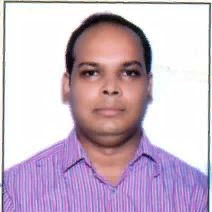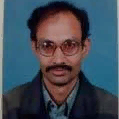International Journal of Image, Graphics and Signal Processing (IJIGSP)
IJIGSP Vol. 5, No. 12, 8 Oct. 2013
Cover page and Table of Contents: PDF (size: 301KB)
Novel Current-Mode All-Pass Filter with Minimum Component Count
Full Text (PDF, 301KB), PP.32-37
Views: 0 Downloads: 0
Author(s)
Index Terms
Analog signal processing, DXCCII, current-mode, all-pass filter
Abstract
In this paper, two novel first order current-mode all-pass filters are proposed using a resistor and a grounded capacitor along with a multi-output dual-X second-generation current conveyor (MO-DXCCII). There is no element matching restriction. Both the circuits exhibit low input and high output impedance, which is a desirable feature for current-mode circuits. The proposed circuits are simulated using SPICE simulation program to confirm the theory.
Cite This Paper
Jitendra Mohan, Bhartendu Chaturvedi, Sudhanshu Maheshwari,"Novel Current-Mode All-Pass Filter with Minimum Component Count", IJIGSP, vol.5, no.12, pp.32-37, 2013. DOI: 10.5815/ijigsp.2013.12.05
Reference
[1]C. Toumazou, F. Lidjey and D. Haigh, “Analog IC design: the current-mode approach”, Peter Peregrinus, UK, 1990.
[2]A. Fabre and J. P. Longuemard, “High performance current processing all-pass filters”, International Journal of Electronics, vol. 66, pp. 619–632, 1989.
[3]M. Higashimura and Y. Fukui, “Realization of current mode all-pass networks using a current conveyor”, IEEE Transactions on Circuits and Systems, vol. 37, pp. 660–661, 1990.
[4]M. Higashimura, “Current-mode all-pass filter using FTFN with grounded capacitor”, Electronics Letter, vol. 27, pp. 1182–1183, 1991.
[5]A. M. Soliman, “Theorems relating to port interchange in current-mode CCII circuits”, International Journal of Electronics, vol. 82, pp. 582–604, 1997.
[6]T. Tsukutani, M. Higashimura, M. Ishida, S. Tsuiki, and Y. Fukui, “A general class of current-mode high-order OTA-C filters”, International Journal of Electronics, vol. 81, pp. 663–669, 1996.
[7]A. M. Soliman, “New current mode filters using current conveyors”, International Journal of Electronics and Communications (AEÜ), vol. 51, pp. 275-278, 1997.
[8]A. Toker, S. Ozoguz, O. Cicekoglu and C. Acar, “Current-mode all-pass filters using current differencing buffered amplifier and a new high-Q band-pass filter configuration”, IEEE Transactions on Circuits and Systems II: Analog and Digital Signal Processing, vol. 47, pp. 949–954, 2000.
[9]S. Maheshwari and I. A. Khan, “Novel first order all-pass sections using a single CCIII”, International Journal of Electronics, vol. 88, pp. 773–778, 2001.
[10]S. Kilinc and U. Cam, “Current-mode first-order all-pass filter employing single current operational amplifier”, Analog Integrated Circuits and Signal Processing, vol. 41, pp. 47– 53, 2004.
[11]S. Maheshwari, “New voltage and current-mode APS using current controlled conveyor”, International Journal of Electronics, vol. 91, pp. 735–743, 2004.
[12]S. Minaei and M. A. Ibrahim, “General configuration for realizing current-mode first order all-pass filter using DVCC”, International Journal of Electronics, vol. 92, pp. 347–356, 2005.
[13]S. Maheshwari, “A new current-mode current-controlled all-pass section”, Journal of Circuits, Systems and Computers, vol. 16, pp. 181–189, 2007.
[14]D. Biolek and V. Biolkova, “All-pass filter employing one grounded capacitor and one active element”, Electronics Letter, vol. 45, pp. 807-808, 2009.
[15]S. Minaei and E. Yuce, “All grounded passive elements current-mode All-pass filter”, Journal of Circuits, Systems and Computers, vol. 18, pp. 31–43, 2009.
[16]A. Zeki and A. Toker, “The dual-X current conveyor (DXCCII): A new active device for tunable continuous-time filters”, International Journal of Electronics, vol. 89, pp. 913-923, 2002.
[17]A. Zeki and A. Toker, “DXCCII-based tunable gyrator”, International Journal of Electronics and Communications (AEÜ), vol. 34, pp. 59-62, 2005.
[18]S. Minaei, “Electronically tunable current-mode universal biquad filter using dual-X current conveyors”, Journal of Circuits, Systems, and Computers, vol. 18, pp. 665–680, 2009.
[19]S. Minaei and E. Yuce, “A new full-wave rectifier circuit employing single dual-X current conveyor”, International Journal of Electronics, vol. 95, pp. 777–784, 2008.
[20]S. Maheshwari and B. Chaturvedi, “High-input low-output impedance all-pass filters using one active element”, IET: Circuits Devices and Systems, vol. 6, pp. 103-110, 2012.
[21]S. Maheshwari and M. S. Ansari, “Catalog of realizations for DXCCII using commercially available ICs and applications”, Radioengineering, vol. 21, pp. 281-289, 2012.
[22]K. M. Al-Ruwaihi, “A floating voltage controlled linear resistor and its application to active RC filters”, International Journal of Electronics, vol. 92, pp. 483-498, 1997.
[23]M. Bhusan and R. W. Newcomb, “Grounding of capacitors in integrated circuits”, Electronics Letter, vol. 3, pp. 148–149, 1967.
[24]S. Minaei and E. Yuce, “Unity/variable-gain voltage-mode/current-mode first-order all-pass filters using single dual-X second-generation current conveyor”, IETE Journal of Research, vol. 56, pp. 305-312, 2010.
[25]P.E. Allen and D.R. Holberg, “CMOS analog circuit design,” Oxford University Press, 2004, 2nd edn.


